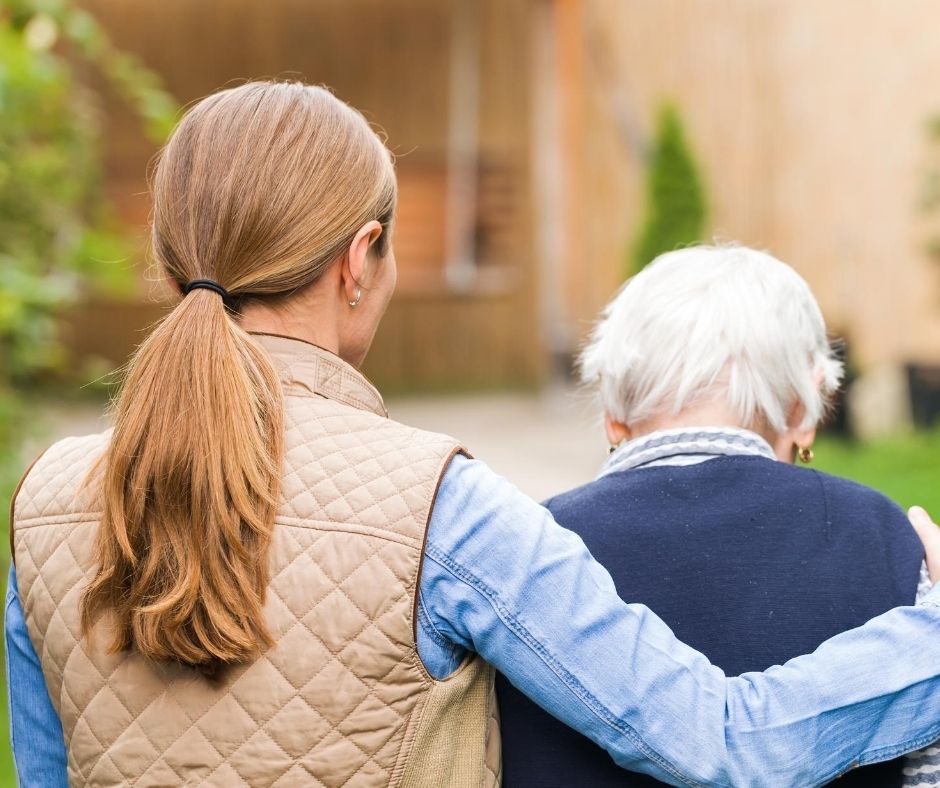What are guidelines for a caring connection? Karen Harrow explains.
Guidelines For A Caring Connection
Pancakes.
That’s the first thing brought to mind when I think of my Aunt J. My vibrant, fierce, tennis-playing aunt who loves fresh flowers, Gilbert and Sullivan songs, and tight hugs.
As a child, waking up in her house meant the smell of melting butter and a table full of laughter with my cousins. Those crispy pancakes did not come off her spatula fast enough. Aunt J was nurturing and generous. She once sat for hours in an empty house waiting for movers so I could inherit my grandmother’s wooden dressers since I had moved out of state. She was intolerant of gossip and cuss words. I respected her standards and boundaries.
A Change In Aunt J
But, in more recent years, Aunt J became edgy. When I would call her to say hello, she, on more than one occasion, insulted one of my children to me. She used coarse language I never had heard come out of her mouth. Her nasty criticisms and long rants became our only “conversations.” I found myself repelled and confused. I would put off calling her.
I am embarrassed to admit I used to press decline when her number popped up on my phone. When she was diagnosed with a brain illness, it shed light on why she acted so differently but it didn’t change that I dreaded calling her to keep in touch. I felt guilty that months would go by and I would avoid her. Her condition continued to decline and yet I was paralyzed with discomfort to try to maintain a relationship with my cherished aunt who now I was treating so badly.
The times I finally did call her left me feeling defeated. I was struggling with how to remedy my side of our relationship. I had to find a way in spite of my fear or anger, to honor who she is to me and not alienate her in response to how she acted. This year, when COVID-19 affected our country I realized that we were all one pandemic away from isolation and loneliness. I have found if I prepare, I can still reach out to her in a loving way. And, I can use these guidelines for the other people in my life who for reasons of illness or aging are isolated as well.
Schedule
Put your call on your calendar to coincide with a utility bill or your breast self-exam or when your lawn guy comes. Make that day a specific one so you know to anticipate it with advance preparation. If you are relying on third parties to help place a call, Facetime or Zoom, find out what time is best for them to help facilitate your call.
Investigate
Check with their caregiver or pay attention to when they are most alert and their best selves.
Allow
Give the contact 10 minutes. 2 or 3 for technical issues. Maybe they just got up from a nap. Maybe someone’s phone is not connecting to wifi. The next 5 minutes are for the chat and the final minutes are for saying goodbye. For many, it is tiresome for some to stay on a call even that long.
Prepare
Think of 3 things you can say genuinely. Make one of those things something current. Mention what beautiful hair they have and how you always admired it. Or, if they have a dog, inquire if their dog is there with them and how devoted an animal lover they are. Another topic that can be is how they have impacted you in a positive way. Tell them that you think about the time they taught you to juggle how much fun it is now to have that ability. Finally, mention that you love them, or admire them and that you are often thinking of them. Reassure them that they are in your heart and mind. They may not be able to speak well or at all, but hearing you say that they are relevant and important may be reaching inside them even if it doesn’t seem so.
Remember
Don’t forget to speak slowly, clearly, and with volume (not shouting). Smile while you are engaging with them. A face that looks or sounds, alarmed or sad is likely not helpful to anyone. Speak without condescension and wait for them to take in what you have said.
Respect
Act with grace. Don’t remind yourself of how this person has insulted you or hurt you in the past. Perhaps the beginning of their illness left them without a filter or changed their personality in unattractive ways. Let that go. Your compassion transcends any more recent transgressions. We are all aging, so act as you wish to be treated: without condescension and with respect.
Gratefulness
Thank your person for taking the time to speak to you. Thank their caregiver for making them accessible to you. Take a moment to appreciate yourself. Facing aging and illness is hard but the rewards are many.
I hope this helped you if you have been struggling to communicate with someone you love. If you have any questions about building a caring connection, please post them in the comments below.



Really great, specific advice.
Very empathetic. I am struggling with my mom and your insight was helpful. Thank you!